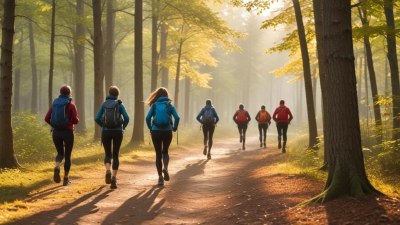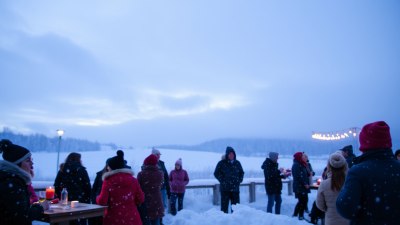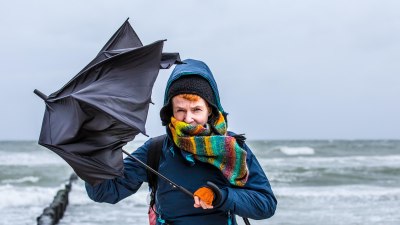How Outdoor Activities Shift When Days Get Longer or Shorter
Explore how changing daylight impacts outdoor activities and lifestyle choices throughout the seasons.

This image was created with the assistance of Freepik
As seasons change and days get longer or shorter, our outdoor activities often shift dramatically. The movement of the sun affects everything from our recreational plans to our energy levels. Understanding this phenomenon can help us maximize our enjoyment of outdoor activities, no matter the time of year.
The Impact of Longer Days
With the arrival of spring and summer, daylight increases significantly. Longer days allow for extended hours of outdoor activities. In these seasons, many people engage more in activities like hiking, biking, and running. This is primarily due to the extended hours of daylight which encourage people to stay outside longer. The feeling of having more time can motivate individuals to venture out after work or school, promoting a more active lifestyle.
Moreover, longer daylight hours often correlate with warmer temperatures, inviting people to enjoy activities like picnicking in the park, playing sports, or simply enjoying nature. Families are more likely to plan weekend trips and outdoor adventures. This boost in outdoor activity can have immense health benefits, including increased physical fitness and improved mental health due to exposure to natural light.
Activities Perfect for Longer Days
As the summer sun sets later, specific activities tend to flourish. Here are some popular outdoor pursuits that people gravitate toward during this time:
- Camping: Longer days make camping more enjoyable as there is more daylight for setting up and enjoying the surroundings.
- Barbecues and Picnics: Families and friends gather to enjoy meals outdoors, taking advantage of warm evenings.
- Sports: Various sports leagues often extend their schedules to utilize the long evenings for practices and games.
- Gardening: Longer days provide more sunlight, crucial for plants, boosting people’s interest in gardening activities.
These activities not only take advantage of the extended daylight but are also facilitated by the vibrant energy of the summer season.
The Challenges of Shorter Days
As fall approaches and eventually leads to winter, days begin to shorten significantly. The shift in daylight can lead to a decrease in outdoor activities as people may feel less inclined to partake in activities when it gets dark earlier. This change can also impact mood and motivation. Shorter days may contribute to feelings of lethargy or “winter blues,” leading some individuals to become less active in colder months.
Confronting the challenges associated with shorter daylight hours may require us to adapt our scheduling and shift our focus to activities that can be performed indoors or within the daylight available. However, many people continue to seek out outdoor experiences despite the limitations of shorter daylight; they simply adjust their activities accordingly.
Adapting to Shorter Days
Outdoor enthusiasts often make tactical changes to adapt to shorter days. Here are some common adjustments:
- Planning Ahead: With darkness settling in earlier, many outdoor activities are planned for earlier in the day. Fitness enthusiasts may shift their runs or bike rides to earlier hours.
- Indoor Alternatives: Some outdoor activities transition indoors. For instance, many cyclists engage in spinning classes or indoor biking setups.
- Choosing Locations Wisely: Individuals may select activity locations that offer better lighting or are safer during the twilight hours.
- Festive Winter Activities: Skiing or snowshoeing can be enjoyable outdoor pursuits during winter months, adapting one’s approach to outdoor enjoyment despite shorter days.
Transitioning to shorter days can also mean embracing the unique beauty of winter. Activities such as ice skating, winter hiking, and holiday celebrations can fill the calendar with outdoor fun.
The Role of Latitude
It’s essential to recognize that the shift in outdoor activities due to changes in daylight is not only affected by seasons but also by latitude. People living closer to the equator experience less variation in daylight throughout the year. In contrast, individuals residing in more northern or southern latitudes endure extreme changes in day length. For instance, regions like Alaska can experience nearly 24 hours of sunlight in the summer and very little daylight in the winter.
This variation greatly impacts the lifestyle and recreational activities in these areas. Someone in Alaska during summer might engage in fishing at midnight or enjoy long hikes under the midnight sun, while winter may push them indoors or into specialized winter sports. Thus, geographical differences play a crucial role in how outdoor activities align with daylight changes.
Outdoor Activity Resilience
Despite the challenges posed by changing daylight, many people exhibit resilience. They continuously strive to maintain an active lifestyle amid the shifts in seasons. This adaptability can be attributed to a commitment to health, social interaction, and the innate human desire to connect with nature.
Many communities also play a role in supporting outdoor activities in all seasons. Local governments often provide lighting in parks for safety, and organizations may host winter running clubs and skiing events to encourage participation in outdoor activity despite shorter daylight hours. Such community initiatives foster resilience and engagement among residents, benefiting public health.
As we observe how outdoor activities fluctuate with changing daylight, it's paramount to appreciate both the benefits of longer days and the adaptations required for shorter days. Understanding how seasonal changes affect our behavior can empower us to plan our outdoor activities more intentionally. Whether soaking up the sun on a long summer's day or embracing winter adventures, enjoying nature is integral to overall health and well-being.
Managing how we approach outdoor activities in response to daylight changes can enhance our experiences and usher in a positive mindset throughout the year. Amid the variations that daylight brings, our passion for outdoor activities endures, shaped by the creative ways we adapt and thrive in the beautiful ecosystem around us.











